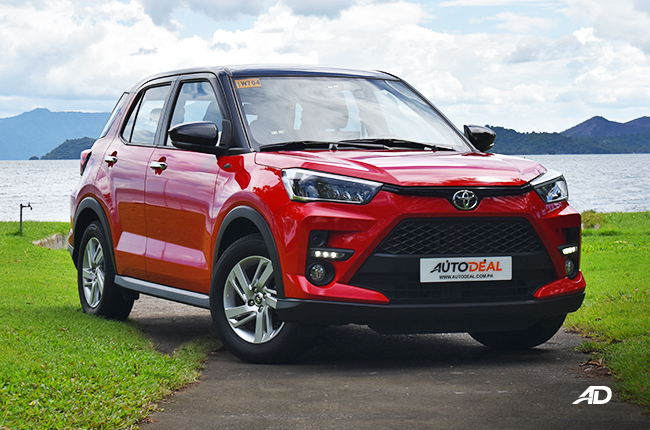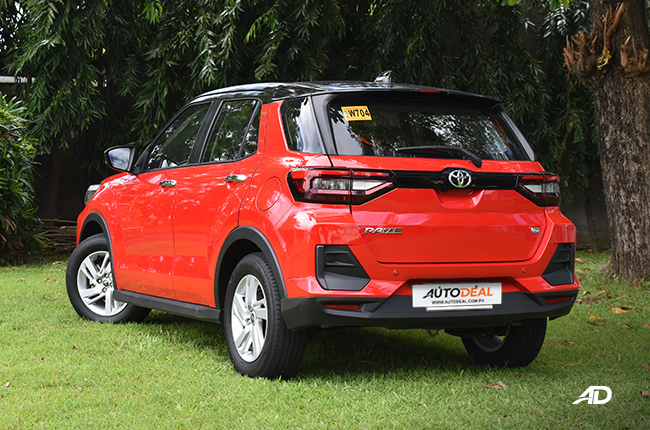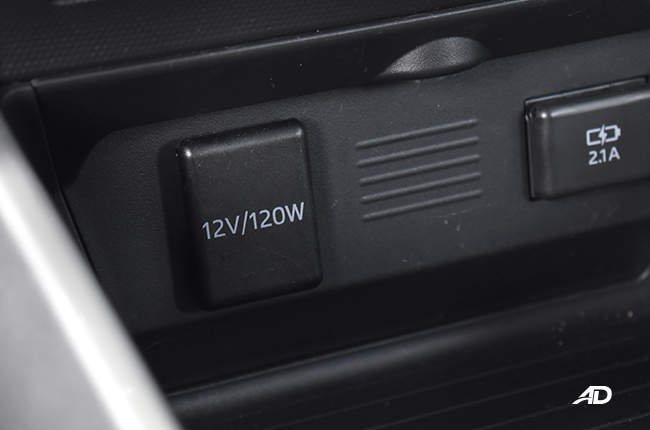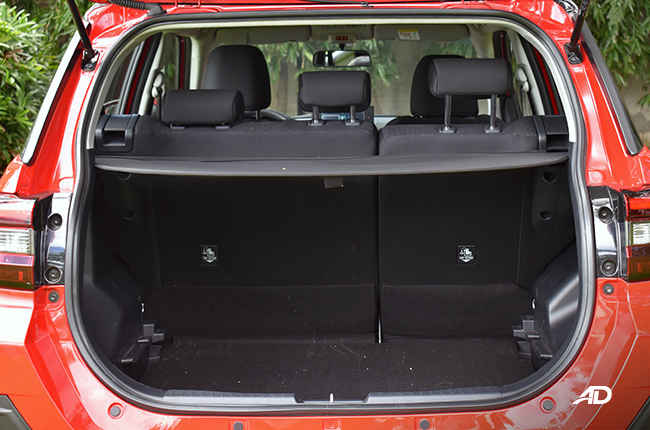
The Toyota Raize since its introduction has proven to be a big hit with Toyota Philippines. The subcompact crossover has won the hearts of buyers all over the nation for its competitive pricing, great set of features, and engine options that fit almost anyone’s budget. As the entry-level crossover of the Japanese automaker, it has a lot to prove to the market, especially with its competitors having more time in the segment to cement themselves.
While the Toyota Raize Turbo model is the best of what the nameplate can offer, there are other variants out there to consider especially for the budget-conscious buyer. So we will be looking at the top-of-the-line naturally aspirated version of the Toyota Raize to see if it's worth getting it or if you should spend a bit more to get the Turbo variant.
As a quick backgrounder, the Toyota Raize is available with two engine options, the first is a 1.0-liter turbocharged three-cylinder engine and the second is a 1.2-liter naturally aspirated gasoline engine. The turbo model is only available with one trim level while the non-turbo variants come in the G and E. Only the E variant gets a choice between a CVT and a five-speed manual. With that out of the way, on to the review.
Engine Output (HP), Acceleration, Transmission, Handling 3.5/5
Exterior & Interior Design, Quality, Fit and Finish, Ergonomics 4.0/5
Cabin Comfort, Suspension, NVH Insulation 4.0/5
Convenience Technologies, Active and Passive Safety Features 3.5/5
Amount of the vehicle you get for the price, Fuel Efficiency 4.0/5
- Fuel efficient engine
- Good amount of technology
- Easy to drive
- Vibrations from the engine
- No charging points in the back
- Non-telescopic steering
Exterior
We begin with the exterior of the Toyota Raize. Its overall appearance gives it an SUV-like look thanks to its boxy design. It gets a large grille at the front which is flanked on either side by sleek LED headlights that also come with LED sequential turn signals. You also get LED daytime running lights along with a plastic bumper chin.
Move onto the side of the Raize, and you get clean body lines all around with black plastic body cladding. Unlike the Turbo model, this variant of the Japanese crossover gets 16-inch alloy wheels which it shares with the E model. This particular test unit, however, comes with a black roof, the actual unit does not come with a black roof so it’s a dealership extra.
Moving to the back of the Raize, It comes with a unique tailgate design that has black plastic that runs across it and the Toyota logo. On either side, it gets LED taillights and cladding on the lower section of the bumper. Aside from this the bumper also gets black accents and the tailgate receives a small spoiler.
Overall the Raize does its best to look like a small SUV on the outside. It looks sporty and rugged without bringing too much attention to itself.
Interior
Entering the cabin of the Toyota Raize, you are greeted by a two-layer dashboard design with a floating infotainment system in the middle. It also comes with hexagonal air vents on the sides and two regular vents in the middle. The climate controls are automatic and there is a push-start button available. A digital instrument cluster is present in the Raize which helps add to make its cabin feel more premium.
Moving onto the seats of the Raize and you get the fabric as the main material. There is accent stitching present on the seats which we believe to be color matched to the body of the vehicle. You do get manual 6-way adjustability for the driver’s seat, while the front passenger’s seat only gets a 4-way manual adjustment.
Overall the interior of the Toyota Raize leans more toward the utilitarian side with hard plastics being the main material used inside. While these are scratchy, you can tell that they were made to be durable and withstand the daily rigors of use. It may not be plush inside but at least the large infotainment system is there along with the digital meter cluster to help liven up the interior.
Comfort

As this is the 1.2-liter version of the Toyota Raize you can expect to feel the vibration of the three-cylinder motor. Despite its comfortable seats the vibration from the engine still manages to make its way into the cabin. This is evident while you sit in traffic and look at the infotainment system. You will see it vibrating when the car is at a complete stop. This does go away when you do get moving. For newer drivers, this might be a jarring experience for them as it may often feel like the engine is about to stall, rest assured, however, that it won’t do that as that's just how three-cylinder motors are. They are naturally unbalanced.
For its ride comfort, the Toyota Raize does well to keep the bumps at bay. However, as this is an entry-level vehicle don’t expect it to completely neutralize road imperfections. Some of these bumps will still make their way into the cabin. Regardless you are still in for a smooth experience if you take it onto flatter roads. Noise harshness and vibrations are kept to a minimum with road noise creeping into the cabin at around 80km/h. As previously mentioned, you will feel the vibrations of the engine, especially in traffic. It's not a deal breaker but it's something that you will need to adjust to with the vehicle.
Technology

For its technology, the Toyota Raize comes with an 8-inch infotainment system that has support for Apple Carplay and Android Auto which is paired with a six-speaker sound system. It also comes with a push-to-star system that is paired with keyless entry and smart entry. Aside from this it also features automatic air conditioning which is great as its system is strong and can quickly cool the cabin.
Overall these are standard features that you can find with other vehicles within its segment. They are executed well and serve their purpose without any muss or fuss. The key, however, does have a bit of a learning curve to it as the Toyota logo serves as the lock button for the vehicle. The smart entry system will also automatically unlock the car when you are near it which can be a bit of a hassle if you have a tight garage. Regardless of this, these are still features we like in the Raize.
Safety

As far as safety is concerned the Toyota Raize 1.2 G comes with dual front airbags, ABS with EBD, vehicle stability control and hill start assist. It also has an immobilizer with an alarm, a reverse camera with guidelines, and reverse sensors. It's a standard kit for the Raize as many of its competitors carry the same number of safety features. They work well and aid the driver in maneuvering the crossover and help with parking as well.
Driving and handling
Driving the Toyota Raize is like driving any other small vehicle. It's nimble on its feet at lower speeds and is fairly quick for city sprints. However, it's the CVT that robs a bit of the driving experience away as it tames down all the 86hp under the hood. If you mash the throttle the CVT struggles to find a ratio to quickly get the car going and all you will hear are revs and an engine that sounds like it's being forced into doing what you ask of it. However, if you are gentle with the throttle and feed it in then the Raize will do what you want in a tamer manner.
Here is the thing, the Raize is a momentum car, and coupled with the CVT means that you need to plan maneuvers such as overtaking way ahead of time. Unlike the turbo model that has meaty mid-range torque once the turbo spools, this naturally aspirated model takes its time delivering you the torque you need. So, you need to rev it out to get the torque and acceleration feel that you want. That being said, because of the CVT and the three-cylinder motor it does well in terms of fuel economy.
Fuel Economy
With our testing of the Raize 1.2 G, we were able to get 10km/L in the city and 25km/L on the highway. This is where the CVT truly shines as it helps keep the revs low in city traffic and while traveling on the highway. In fact between the turbo model and this G variant, this G variant is more fuel efficient. This is because while the turbo gives you better power in the mid-range while cruising it takes up more fuel as it will constantly be in boost.
Verdict

The Toyota Raize 1.2 G is priced right below the P950,000 mark. This puts it up against the likes of the Kia Stonic and even the MG ZS in terms of pricing. While these vehicles are similarly equipped the Raize lacks a bit behind in terms of performance. It has the least amount of horsepower and torque compared to its other competitors. However, where it makes up ground is when it comes to its overall package. What you get is Toyota's reliability and an extensive dealership behind it. It also helps that the Raize is well equipped as it comes with the latest technology available from the Japanese manufacturer. It may not come with the latest safety technology but it is an overall balanced package for those looking to get their first vehicle.
It ticks all the right boxes and is competitively priced for what it offers. It comes with all the technology needed by a modern car buyer and the fact that the Raize is rather small in size makes it a breeze to park and maneuver. While it is true that the Turbo model is the one to get for a better driving experience, the 1.2 G is where the value-for-money proposition comes in. It's the balanced offering between the two offering you a similar feature set with better fuel economy.
Exterior Photo Gallery
Interior Photo Gallery
Specifications
Engine
1.2 LFuel Type
GasolinePerformance
86 hp @ 6,000 rpmTransmission
CVT-
Summary
-
Name Toyota Raize 1.2 G CVT Body Type Crossover Price ₱942,000 Transmission Category CVT -
Engine
-
Engine Size 1.2 L Displacement 1,198 cc Number of Cylinders 3 Number of Valves 12 Transmission Type Continuously Variable Transmission -
Performance
-
Drivetrain Front-Wheel Drive Max Output (hp) 86 hp @ 6,000 rpm Max Torque (nm) 113 Nm @ 4,500 rpm -
Economy & Environment
-
Fuel Type Gasoline Emissions Standard Euro 4 Fuel Capacity 36.0 L *Combined Fuel Consumption 17.5 km/L *Autodeal Review
-
Dimensions
-
Length 4,030 mm Width 1,710 mm Height 1,605 mm Wheelbase 2,525 mm Turning Circle 10 m Ground Clearance 200 mm Trunk Capacity 369 L Number of Doors 5 Number of Seats 5 -
Safety & Security
-
Driver's Airbag 1 Front Passenger's Airbag 1 Side Airbag Curtain Airbag Knee Airbag Auto Brake System Electronic Brake Distribution Anti-lock Brake System (ABS) Immobilizer Security Alarm Stability Control Electronic Door Locks Speed Sensing Door Locks ISOFIX Lane Departure Warning System Blind-Spot Detection System -
Features
-
Cruise Control Front Parking Sensors Rear Parking Sensors Leather Upholstery Push Start Button Wheel Size 16 in Wheels Metal Type Alloy Airconditioning System digital with Auto Climate Control Entertainment System 8-inch infotainment system with 6-speaker sound system Connectivity Aux, Bluetooth, USB, Voice command, Apple CarPlay and Android Auto Navigation Ready Warranty 3 Years (100,000 km) Keyless Entry Roof Rack Sunroof Electric Adjustable Seats Power Steering Power Windows Power Outlet Steering Wheel Audio Control -
Technology
-
Active Park Assist Hill Start Assist AWD Modes n/a Tire Pressure Monitoring Heads-up Display Power Liftgate Start-stop System
Colors
Latest Review
-
Addictively excessive: The Ford Ranger Raptor Twin Turbo V6 / Review
The Ford Ranger Raptor Twin Turbo V6 is one crazy pickup truck. Wondering why? Just keep reading.
4.6 / 5 -
The Kia Carnival gives you more: More seats, more comfort, and more practicality / Review
The Kia Carnival is a three-row MPV designed for executives and families. It combines comfort, technology, and practicality, making it a strong choice for those looking for a premium people...
4.2 / 5 -
The Jetour Ice Cream: A pint-sized EV that’s hard to ignore / Review
The Jetour Ice Cream is an adorable, pint-sized electric car that’s made for the city. Affordable and stylish, it’s easy to love, but does it tick all the boxes for you?
3.7 / 5
Popular Articles
-
Cheapest cars under P700,000 in the Philippines
Jerome Tresvalles · Sep 02, 2024
-
First car or next car, the Ford EcoSport is a tough package to beat
Jun 18, 2021
-
Car Maintenance checklist and guide – here’s everything you need to know
Earl Lee · Jan 12, 2021
-
Most fuel efficient family cars in the Philippines
Bryan Aaron Rivera · Nov 27, 2020
-
2021 Geely Okavango — Everything you need to know
Joey Deriquito · Nov 19, 2020
-
Family cars in the Philippines with the biggest trunks
Sep 20, 2023
-
Head to head: Toyota Rush vs. Suzuki XL7
Joey Deriquito · Oct 28, 2020
-
Why oil changes are important for your car
Earl Lee · Nov 10, 2020
-
2021 Kia Stonic — What you need to know about it
Joey Deriquito · Oct 16, 2020
-
Top 7 tips for buying a used car in the Philippines
Joey Deriquito · Nov 26, 2020






















